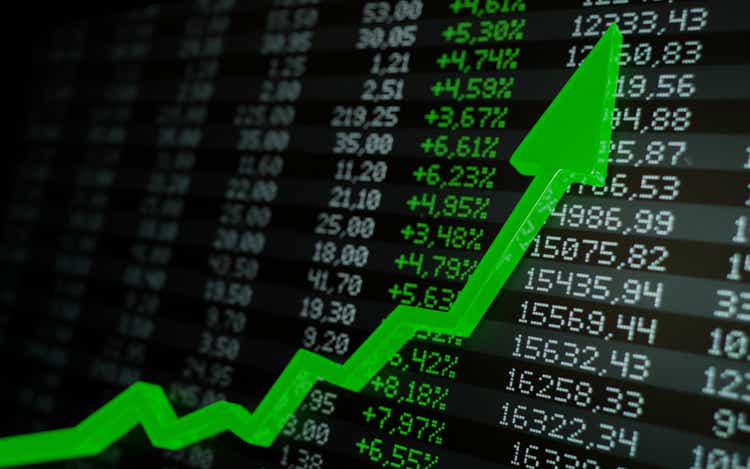
hernan4429/iStock via Getty Images
This is part two of my two-part series. Please read part one to understand why I was forced to upgrade my investment procession.
The reality of the situation: The Easy Strategy
Many tech stocks are down so much that they are clearly pricing in a lot of negative. So many of tech stocks are down more than 70% from their highs that they must be a bargain investment opportunity, right?
Even if these stocks retrace a little bit back to their highs, one is likely to clear a 50% return in no time, right?
After all, if something is down 70%, you can get a 50% bounce and it can still be down materially from the former highs. The ”overvalued” highs.
Consequently, after answering these leading questions in the affirmative, the only logical solution is to buy the dip. Always, whatever you do, dollar cost average and buy the dip, right?
After all, so many stocks are now being priced below their pre-COVID multiples? This is despite all the digital acceleration that we’ve seen.
We now know that those businesses are going to be long-term winners for the next decade. The problem here is that it’s tough to make predictions, especially about the future.
Indeed, the easy option is not entirely realistic. These ”obvious” investment strategies work well until they don’t. In sum, these ”easy” investment strategies work particularly well if you don’t need to make a solid return in the near term.
A Better Investment Strategy
The more that I read about the Ukraine war, the more I started thinking. What happens, for example, if sanctions on Russia lead to the cost of living crisis in Europe becoming unmanageable? Is it possible that global tech platforms could be meaningfully impaired?
And more importantly, at their current valuations am I being compensated for that risk?
Then, on the other side the dynamic we have to remember that the biggest importer of many commodities is China.
China went from being a carbon-emitting exporter of commodities to an importer of commodities. After all, China understood that if it wanted to reach peak carbon emissions before 2030, to reach its self-imposed 2-degree temperature rise, it needed to cap the production of carbon-heavy metals, such as aluminum, or steel, to mention a few commodities.
Consequently, what happened was that Russia/Belarus/Ukraine are huge exports of commodities/energy/fertilizer products, and China is looking to increase its consumption of these products.
In the meantime, back in the US, businesses are very well positioned to embrace the global commodity shortages.
The way that I set up my portfolio is not the kind of portfolio that gets hit if Putin departs tomorrow. This is a portfolio that acknowledges the fact that there are massive energy, fertilizer, and metal shortages in the world, predominantly driven by China’s desire to minimize carbon emissions.
What’s happened is that in many cases there’s simply too much demand and not enough supply. In the case of fertilizers or metals, it will take somewhere between two to four years for these imbalances to get corrected.
You simply can’t write some code to get these supply deficits sorted out. You need to build plants, train engineers, and get the distribution up and running. It takes time. You can’t get around that. This means that these shortages will remain in place. And certain companies are going to benefit massively.
What’s more, the commodity businesses that have survived more than a decade of underinvestment, are the businesses that have very strong balance sheets and run their operations on Lean Manufacturing.
And they’ll see demand go through the roof and prices soaring. And with very clean balance sheets and low valuations, these are very good businesses to align with.
And they are nearly all embarking on massive share repurchase programs that will remove the total number of shares outstanding by 3% to 10% in 2022. And that means, that unlike with tech companies, where buybacks don’t even offset management’s stock-based compensation, these buybacks will actually bring down the total number of shares.
Final Words
I don’t have a crystal ball. There are countless scenarios that can unfold from here.
Clearly, the Fed is looking at all this, the same as you, the same as me, and one likely outcome is that the Fed only makes one or two, or perhaps three small hikes in 2022 of approximately 25 to 50 basis points which are not significant in the grand scheme of things.
Particularly with interest rates being where they are now, towards the lower end of their historical range. This is a known unknown.
In sum, I’ve attempted to lay out what makes sense to me today. I don’t know what investment strategy makes the most sense to you. I also don’t know your investment time horizons or your risk tolerance.
If you don’t need to make a return any time over the next two years. Then, continue buying amazing, high-quality tech companies. If there is a further drawdown, you know that you made that decision and you are going to stick with it.
But if you believe that you should perhaps hedge your bets and keep an open mind, then, follow me on this journey.
Thank you for reading!
The original article from one month ago.


Be the first to comment